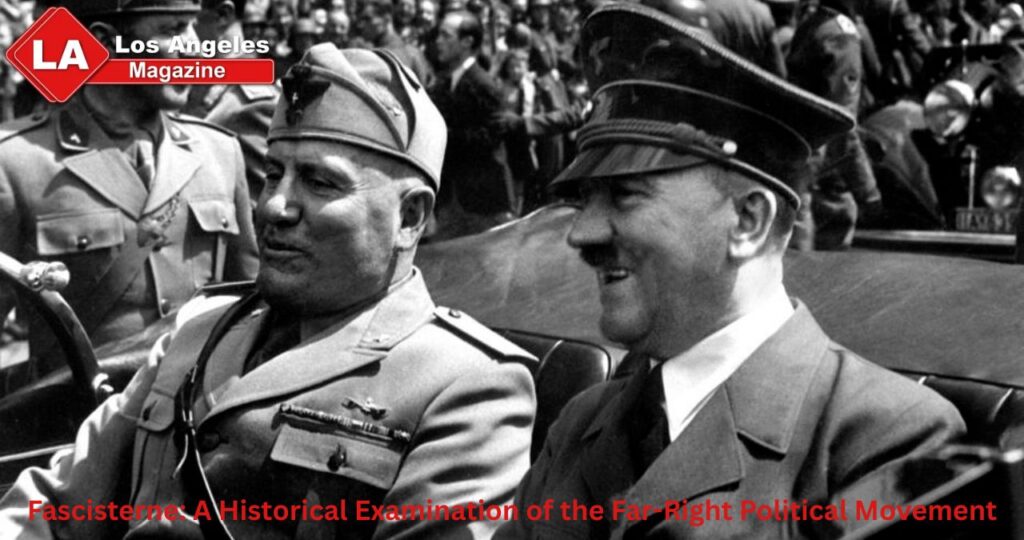In the turbulent history of European politics, certain movements have left a profound impact on the cultural and social landscapes of their time. Among these, “Fascisterne,” a term associated with the Danish fascist movement, stands out. Understanding the role of Fascisterne provides insight into the rise of far-right ideologies, their implications on national identity, and the broader political shifts that marked the early and mid-20th century. This article explores the origins, influence, and legacy of Fascisterne in Denmark, as well as its broader impact on the European political climate.
The Birth of Fascisterne: Origins and Early Development
Fascisterne, a Danish term for the fascists, refers to a political group in Denmark that drew its inspiration from the Italian fascist movement led by Benito Mussolini. The movement began to take form in the early 1930s, following the rise of fascist ideologies in Italy and Germany. Like many European nations in the interwar period, Denmark faced economic instability, social unrest, and growing political polarization, which created fertile ground for the growth of radical political movements.
The fascist ideology in Denmark gained a foothold in the 1930s with the formation of the Danmarks Nationalsocialistiske Arbejderparti (DNSAP) or the Danish National Socialist Workers’ Party, which was closely aligned with the Nazi Party of Germany. The DNSAP’s rhetoric emphasized nationalism, militarism, anti-communism, and Aryan racial superiority. The movement sought to mobilize the working class and disenfranchised segments of society, offering a radical alternative to Denmark’s traditional political establishment.
Fascisterne, though never as large or influential as their counterparts in Germany or Italy, began to attract a modest following among certain segments of Danish society. However, Denmark’s political establishment largely rejected the fascist ideology, and the movement was consistently marginalized in the face of more established political parties.
The Rise of the Danish Fascist Party
The most prominent fascist group in Denmark was the Danmarks Nationalsocialistiske Arbejderparti (DNSAP), which aimed to bring fascism to Denmark’s political and social structures. Led by Frits Clausen, the DNSAP espoused traditional fascist ideals, including a corporatist economy, a centralized state, and the establishment of a strong authoritarian regime.
During the early 1930s, the movement was part of a broader wave of far-right extremism that swept across Europe. It shared many ideological features with other fascist movements of the time, including an emphasis on the supremacy of the state, the need for a powerful leader, and the rejection of liberal democracy. The DNSAP also promoted an anti-Semitic agenda, aligning itself with the racist and xenophobic ideologies that were gaining prominence in Europe.
However, despite efforts to spread their message, the fascist movement in Denmark faced significant resistance from the Danish populace. Denmark was traditionally a stronghold of social democracy and had a robust system of labor unions, which countered the influence of fascist rhetoric. Furthermore, Denmark’s relatively small population and stable political environment made it less susceptible to the kind of extremist upheavals that were occurring in other European nations.
Fascisterne’s Role During World War II
The onset of World War II in 1939 brought dramatic shifts to the political landscape of Europe. Fascisterne, particularly the DNSAP, aligned themselves with Nazi Germany, offering support to Adolf Hitler’s regime and its expansionist policies. The party’s leaders believed that Denmark could benefit from a closer alliance with Germany, which they saw as a natural partner in their struggle against communism and liberalism.
As Nazi forces began to occupy Denmark in 1940, many of the fascist sympathizers saw this as an opportunity to exert influence over the country’s political structures. The fascist movement found itself in a difficult position, as Denmark, although under German occupation, retained a degree of autonomy in its internal affairs. The Danish government, led by King Christian X, remained largely resistant to Nazi pressures and sought to maintain the country’s independence.
While the DNSAP continued to operate as a pro-Nazi faction within Denmark, it struggled to gain widespread support from the Danish public. The party’s lack of success in garnering the loyalty of ordinary citizens, coupled with Denmark’s ongoing resistance to fascism, prevented the fascists from achieving the kind of dominance they had hoped for.
The Decline of Fascisterne Post-World War II
After the end of World War II, fascist movements across Europe experienced a sharp decline. In Denmark, the end of the war and the defeat of Nazi Germany led to the disintegration of the fascist political parties. The DNSAP was banned, and many of its leaders were arrested or forced into hiding. Frits Clausen, the leader of the DNSAP, was detained and later tried for his collaboration with Nazi Germany. He was convicted of treason and sentenced to prison.
With the defeat of the fascist forces, Denmark returned to its pre-war political status quo, which was characterized by a strong democratic tradition and a commitment to social welfare. Fascism, along with its related ideologies of nationalism, racism, and militarism, was discredited in the eyes of most Danes, and the remnants of Fascisterne struggled to maintain any political relevance.
However, the ideology of fascism did not disappear entirely. Although fascist parties were outlawed and their leaders persecuted, the legacy of fascism continued to influence certain segments of Danish society. Far-right movements, though smaller and less influential, continued to exist in the shadows, offering a more subtle form of nationalism that occasionally flared up in the years following the war.
The Legacy of Fascisterne in Denmark
While the fascist movement in Denmark was relatively short-lived and never attained the kind of power it achieved in other European countries, its impact cannot be overlooked. The rise of Fascisterne and the subsequent decline of fascism in Denmark serve as an important lesson in the dangers of far-right extremism.
Fascism, with its focus on authoritarianism, racial superiority, and militarism, poses a significant threat to democratic institutions and social cohesion. The history of Fascisterne underscores the importance of maintaining vigilance against the spread of such ideologies, particularly in times of economic hardship or political instability.
In the years following the war, Denmark has largely embraced a political culture rooted in social democracy, human rights, and international cooperation. However, far-right groups and movements still exist in Denmark and other parts of Europe, reflecting the ongoing struggle against fascism and similar ideologies.
Conclusion: The Need for Vigilance Against Extremism
Fascisterne, though a small and ultimately unsuccessful movement in Denmark’s political history, is a reminder of the dangers posed by extremist ideologies. The rise of fascism in Europe during the early 20th century left an indelible mark on the continent’s political and social structures, and the legacy of movements like Fascisterne should not be forgotten.
As we look toward the future, it is essential to remain vigilant against the resurgence of far-right extremism. History has shown us the destructive power of fascism, and it is the responsibility of all citizens, politicians, and leaders to ensure that such ideologies do not take root again. By learning from the past, we can work together to create a future where tolerance, democracy, and human rights prevail over hate and division.



